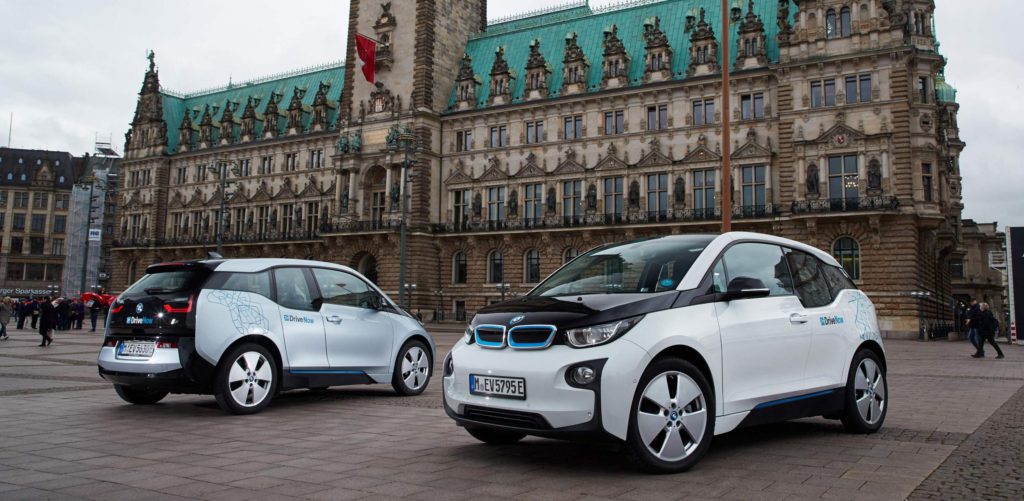BMW cuts vehicle options to increase R&D spend as WLTP approaches
29 June 2017

29 June 2017
German manufacturer BMW is to streamline its manufacturing process, offering fewer engine variants and less equipment options in order to offset its high research and development (R&D) spending through 2019.
The group is developing electric vehicles (EVs) as well as connected and autonomous technologies, with plans to launch an electric Mini in 2019 as well as a possible electric version of the 3-Series, expected to go on show at the Frankfurt Motor Show in 2017. In addition, the company is looking to develop its internal combustion engines to meet stricter emissions regulations.
BMW is also having to push forward with EV development at a rapid pace following the decision by the Chinese government not to drop or delay plans for a quota on EVs, meaning the company needs to have a number of models available by 2018. Currently, the automaker only offers the BMW i3 as a pure electric model.
In 2016, the company spent €5.16 billion, or 5.5% of its revenue, on R&D. However, electric vehicles are less profitable than traditional propulsion systems at present, due to the materials and batteries required as well as the need for constant research to develop range. This means that the company needs to look for savings elsewhere and has identified its equipment options as an area it can save on.
Speaking to journalists, the German carmaker’s finance chief Nicolas Peter said: ′The next three years [R&D spending] will be between 5.5 and 6%. We have over 100 steering wheels on offer. Do we need that many variants? In the 5 series we have four diesel engines on offer. I would not bet on there being four diesel engines on offer in the next generation vehicle.’
BMW will drop manual gearshift variants of the BMW 2 series Coupe in the United States to cut down the cost of certifying components in each market, and it has dropped manual shift options from entry-level versions of the new 5-Series diesel, he said. It will also cut down the number of engine variants.
The move comes as vehicle manufacturers are preparing for the introduction of World Light Duty Test Programme (WLTP), which means vehicles will undergo a stricter emissions test both in and outside laboratory conditions. To make things more complicated, optional extras are also included in the tests, with vehicles in a variety of guises having to perform through the WLTP simulations. For manufacturers, this could prove costly with each new variant having to go through testing.
Premium brands tend to have substantially higher optional content than the volume manufacturers. This means that under the current New European Driving Cycle (NEDC) laboratory testing, many cars submitted for examination are much lighter and, in turn, more fuel-efficient and less polluting than the cars that have actually been registered and used on the road once common optional extras were fitted.
The different WLTP testing rules could also make it confusing for consumers, as it may mean different options push vehicles into different bands depending on what the driver adds at the dealership, such as alloy wheels or audio systems, which could increase a vehicle’s weight and alter its ride, therefore adding to emissions. This may end up costing manufacturers even more as the European Commission has stated that any increase in costs must not be passed on to the consumer.
BMW’s move may therefore save them money during testing as well as taking a number of confusing decisions away from the consumer. It could be the first of many manufacturers to take this route. While 2017 sees the introduction of new models having to go through WLTP, every model a manufacturer produces will need to be tested to the new standards from September 2018.
The news concerning the need for increased R&D comes as German automotive parts supplier Schaeffler has announced it has slashed its annual profit guidance, citing increased expenses for developing EVs as a reason.
As Schaeffler supplies internal combustion engine parts to a large number of manufacturers, it has a lot to lose as these companies look towards an electric future. Therefore, the supplier has itself been developing EV technology in order to diversify its range. However, this move has seen a spike in its R&D costs as it inevitably costs more to ensure new technologies and prototypes function correctly for different carmakers.
Photograph courtesy of BMW Group
The insight behind the news
Never miss another story – sign up to receive your complimentary Autovista Group Daily Brief. This timely and incisive daily briefing covering automotive news and insights on the issues affecting your business is delivered direct to your inbox.